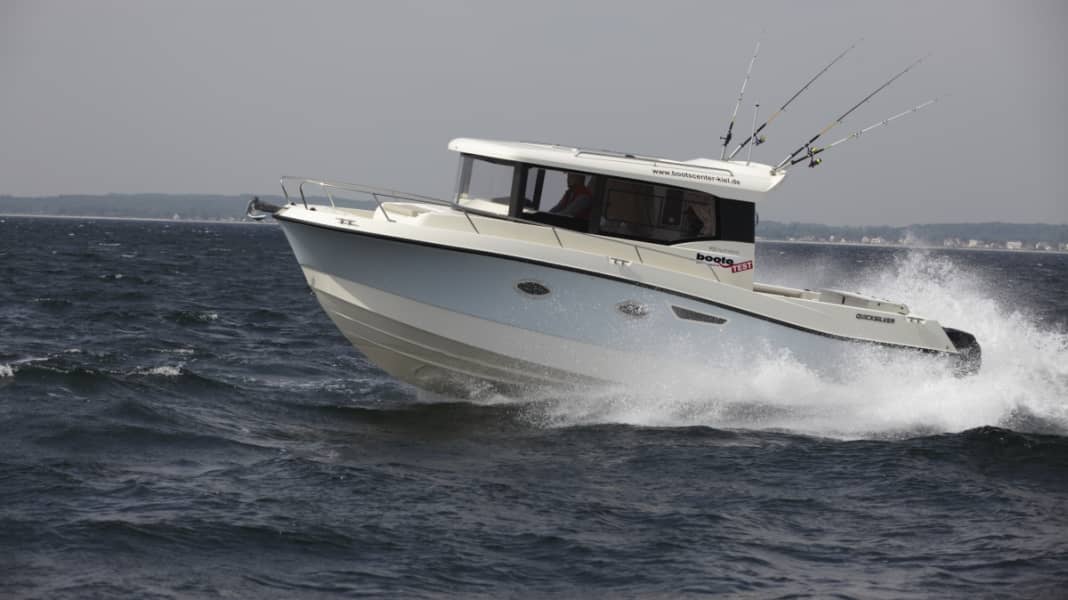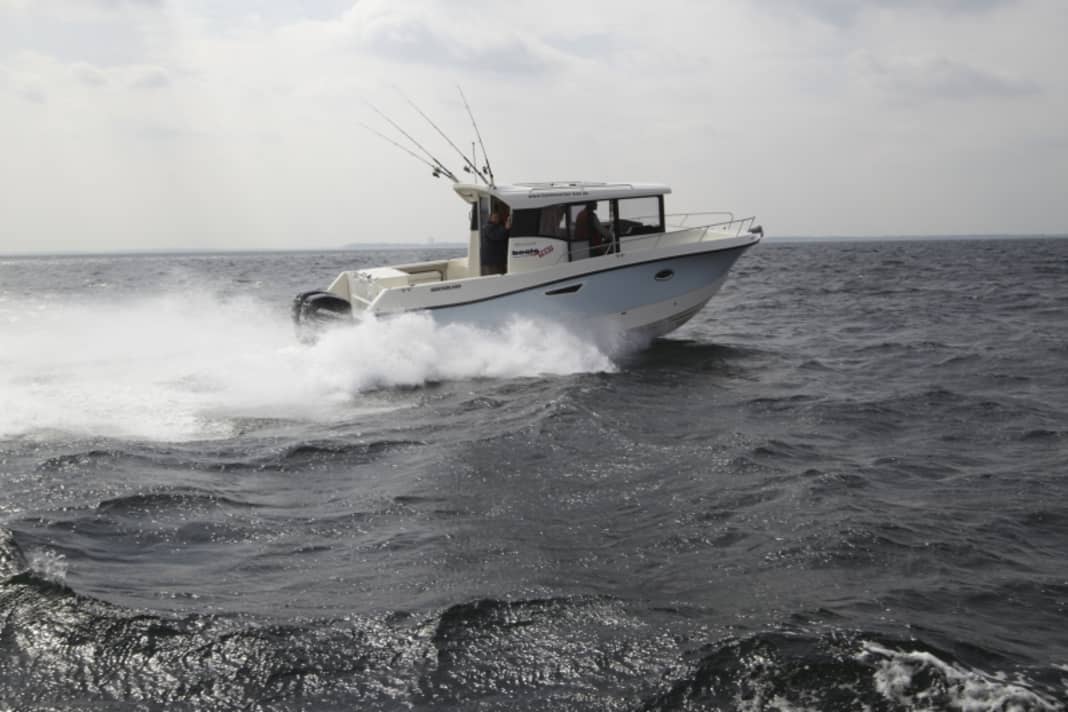
With a length of 8.88 metres and a width of 2.99 metres, the Quicksilver Captur 905 Pilothouse is the largest boat in the five-model Captur series. These boats manage the balancing act between fishing, touring and work boat. Anglers and fishermen can look forward to numerous rod holders, fishing stowage options, bait box and fish box on the 905.

The sliding door on the helm station should make mooring and locking much easier for touring skippers. Alternatively, there is a second helm station for the cockpit on the options list. The Pilothouse is approved for crews of up to ten people. They are accommodated on two fold-out benches in the cockpit and in the saloon at the table and seat combination, which can be converted into an emergency double berth. There is additional sleeping space below deck in the bow cabin and the underfloor slip cabin, making a total of 4+2 berths for the Quicksilver.
The shipyard specifies category B (outside coastal waters) as the sailing area; the boat can be motorised as a twin installation with up to 500 hp. With a weight of 3100 kg without engines, trailer captains must realise that transport can only be carried out by a haulage company or by water.
Driving and manoeuvring
The full circles when travelling slowly forwards measure 1 1⁄4 boat lengths on both sides. If the same manoeuvre is performed in reverse, the circle diameters measure one boat length. The manoeuvre from starboard to port takes six seconds. In the other direction, the manoeuvre is even faster at four seconds. Thanks to the double motor installation, turning on the spot is also no problem.
If this is not enough in terms of manoeuvrability or if you prefer a single engine, you can also order a bow thruster. To minimise the stern wave and splash water, the rev counter should not exceed 1700 rpm.
Weight shifts have no noticeable effect on the heel and course of the boat. The transition from displacement to planing takes place between 2800 and 3700 rpm without the use of the trim tabs, which are available at extra cost. Foresight is only lost briefly in the direct bow area due to the rising nose. Economically, the test boat with 2 x Mercury F 250 XL Verado is travelling at 4000 rpm or 24 knots. If you run the two engines at 4500 rpm, you can move through the water at a good 27 knots. The hull glides over the waves in the most stable and smoothest way.
At our maximum speed of 39 knots, the rev counter shows 6200 rpm. A tank of 400 litres of petrol minus 15% reserve is enough for 118 nm at economic planing speed. A result that does not fulfil our minimum requirements of 150 nm for such a boat. With a top speed of 39 knots, the radius of action is much more limited, at a meagre 66 nm. In terms of noise, the comfort limit (80 dBA) is only exceeded at 4500 rpm. Even at full load, the meter's pointer does not exceed 86 dB/A.
As the circles get smaller and smaller, the boat leans heavily into the turn so that the view to the side is obscured by the roof. Before the lateral forces reach critical values, the propellers draw air. The Quicksilver completes the 180° turns under high lateral forces, but without tipping. The hull immediately follows the steering movements when the rudder is jerked and also on the slalom course - no rocking or swaying here either.
Engine, tank, electrics
The fact that the right height and a suitable propeller were found when installing the two Mercury F 250 XL Verado is demonstrated by the good handling and the engine full load speed of 6200 rpm. The range recommended by the manufacturer is between 5800-6400 rpm. Cables and fuel hoses are neatly routed and well supported. The fuel tank and batteries are equally well accommodated.
Security
The Quicksilver scores points here with a 2.5 kg fire extinguisher, which is easily accessible behind the driver's seat. There is also a fire port near the fuel tank. The 905 has to accept deductions due to the lack of a fuel shut-off valve and manual drain pump.
Living
The cushions on board the Pilothouse are firm and comfortable even on longer trips. The helmsman and crew members have a good view of the outside from the saloon. There are numerous stowage spaces below deck. The two double berths are also well designed for long people. The toilet room is more cramped.






Data sheet: Quicksilver Pilothouse 905
Shipyard: Quicksilver
Type designation: Quicksilver Pilothouse 905
CE category: B - Outside coastal waters
Material of hull and deck: Plastic
Length: 8,88 m
Width: 2,99 m
Displacement: 3,10 t
Price: 127.880,00 €

